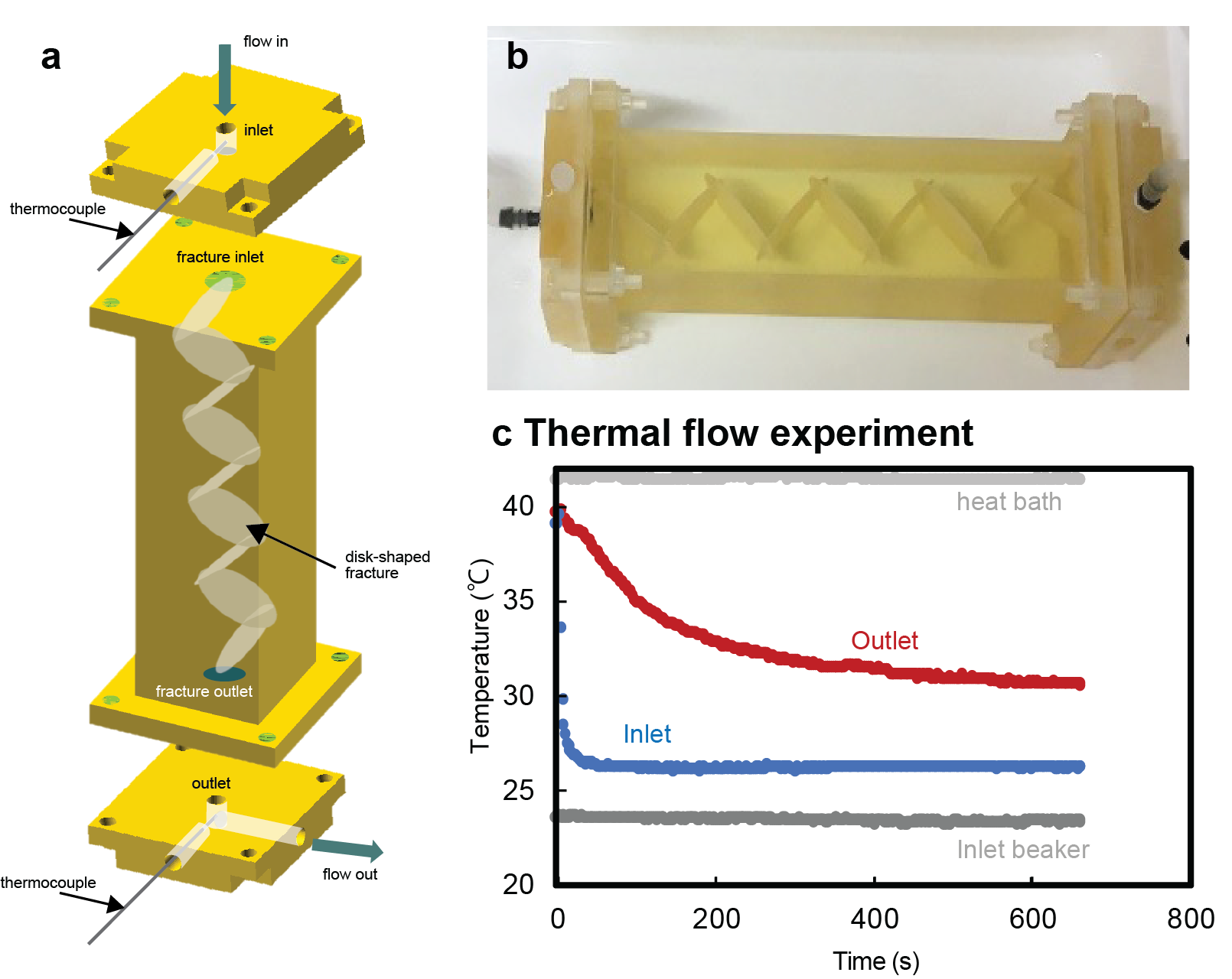
We created 3D-printed fracture networks and conducted thermal flow experiments. The fracture sample was designed using the freely available OpenSCAD software (https://openscad.org/). The fracture section consisted of nine intersecting disc-shaped fractures. The fractures overlapped to form a flow-channel from one end of the model to the other end. The zigzagging structure was chosen considering the model size constraints set by the 3D printer and the need to ensure enough flow-channel surface area to obtain effective temperature data. An ultraviolet curing type 3D printer (Agilista 3100, KEYENCE co.) generated a 3D-printed sample consisting of acrylic ultraviolet-curing resin. The flow-channel or cavity space was sculpted by the printer with a support material. After 3D printing the sample object, the water-soluble support material was removed to create a clean fracture structure by washing the 3D-printed sample in an ultrasonic bath for several days. The fracture sample was used for thermal flow experiments. Before running the flow experiments, the fracture model and flow tubes were saturated with hot water. Cold water was injected with constant flow rates of 15, 20, 25, and 30 ml/min. Temperature changes were measured in the inlet beaker, at the fracture inlet, at the fracture outlet, and in the heat bath. Reference: https://doi.org/10.1016/j.geothermics.2022.102480
Anna Suzuki (Tohoku University)
Oct. 23, 2022
ODC-BY 1.0
10.17612/zc6q-9167
The downloadable archive contains all project data; the size of the archive file for this project is 2 MB.
Download